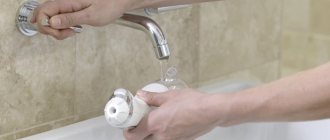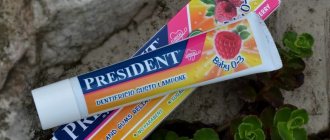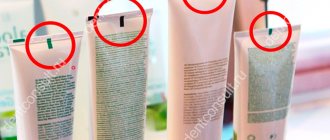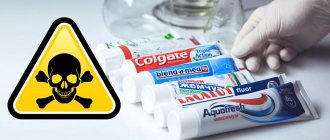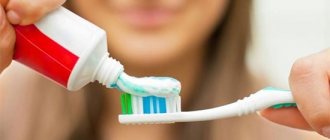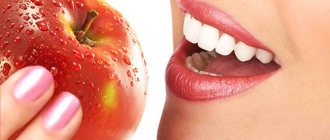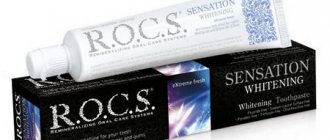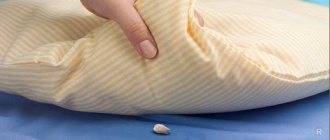Despite the large number of toothpastes available on the market, not all people use them. Some people do not like the increased foaming, while others suffer from individual intolerance to some of the ingredients included in the cleaning product. Also, many simply do not trust modern toothpaste manufacturers or technologies. As an alternative, more and more people are switching to natural products.
How to make toothpaste at home
Toothpaste can also be made at home using only natural ingredients. This procedure is simple and inexpensive, the main thing is to follow the instructions. This article will discuss how to make toothpaste at home.
Benefits of Natural Ingredients
Most herbalists and dentists confidently claim that it will be much healthier if you set aside 20-30 minutes of free time to make toothpaste using natural ingredients. If you correctly observe the proportions and follow the instructions for use, then when caring for your gums and teeth you can achieve no worse effect than using store-bought products.
Natural toothpaste
The main advantages of the home remedy include the following points.
- Low cost. Purchasing all the necessary ingredients for making pasta will not put a big dent in the family budget. You can easily purchase everything you need at your nearest store or pharmacy.
- Store-bought toothpaste contains various synthetic substances that cause foam. The home remedy consists exclusively of natural ingredients.
- The likelihood of damage to the top layer of tooth enamel is reduced, unlike store-bought preparations that contain strong abrasives.
Natural toothpaste does not contain strong abrasives - Homemade toothpaste has disinfecting properties, so regular use of it significantly reduces the number of germs and bacteria in the oral cavity. The addition of aloe vera or valuable esters has a positive effect on the microflora of the oral cavity.
- The natural paste pleasantly freshens breath by adding lemon juice and a small amount of mint essential oil.
Natural paste pleasantly freshens breath - The top layer of tooth enamel becomes a little lighter, and plaque gradually dissolves thanks to gentle cleaning of the teeth.
- Homemade paste helps strengthen enamel and also actively affects tooth tissue.
- The product does not contain aggressive chemicals that negatively affect teeth, harmful surfactants and various dyes.
Surfactants (or surfactants) are harmful chemical components that are included in most cleaning products. Their presence significantly enhances the effect of a particular remedy. Regular exposure of human skin to surfactants destroys the protective layer of fat, making the body more vulnerable to external factors.
Natural soap
Adding natural soap to homemade toothpaste prevents it from drying out quickly, and glycerin reduces the impact of harsh substances and gives the liquid a thick consistency, making it smooth. You just need to add all the components in the recommended quantities.
Caring for your teeth with your own hands - making toothpaste
Effect of homemade toothpaste
The effectiveness of such a product directly depends on the components that make up it.
- Baking soda. Plays the role of a cleaning material that breaks down plaque and removes it from the surface of the tooth. Additionally, it has an antibacterial effect. It must be added to the composition with extreme caution, strictly observing the proportions.
- 3% hydrogen peroxide. Used for minimal foaming of homemade pasta. Whitens teeth and significantly enhances cleansing. The amount of it in the product should be minimal (1-2 drops).
- Glycerol. A binder, thanks to which the components are mixed, the structure of the product becomes homogeneous. It is odorless and colorless.
If necessary, you can add various flavorings and aromas. Thus, tea tree oil, cinnamon, mint, and lemon juice saturate the paste with beneficial vitamins, freshen breath, and have a healing and antiseptic effect.
In the process of preparing a homemade cleaning product, you need to pay attention to the little things - the size of the component fraction, carefully observing the proportions, eliminating substances that conflict with each other.
Neglecting these conditions will reduce its effectiveness to zero and can also cause harm to your teeth. If you are not ready to show such scrupulousness, it is better to buy a ready-made product at a pharmacy or store.
Cooking recipes
There are many different recipes for making homemade toothpaste, which allows you to choose the one that suits you best. Experiment until you find the best option. Below are common recipes for making homemade toothpastes.
Recipe No.1. With bentonite clay
Step 1. To prepare this unusual pasta, you need to prepare everything you need. First of all, you need bentonite clay, which is used in dental practice to remineralize the dentition. You will need 15 drops of peppermint, 2 tbsp. l. pure water, 5 g crushed sea salt, 1 tsp. stevia, as well as bentonite itself - 3-4 tbsp. l. All ingredients can be easily purchased at any pharmacy.
Preparing everything you need
Step 2. In addition to the ingredients, you also need to take care of the containers. It is advisable to use a plastic bowl, since metal contact with clay can cause unpleasant consequences. Use a metal fork to mix.
Preparing the bowl, jar and fork
Step 3. All collected ingredients must be mixed in one bowl. When mixing, you need to follow a certain sequence: first add the dry ingredients, and then start adding the liquid ones one by one.
Mixing ingredients
Step 4: Use a small glass jar to store the prepared toothpaste. When brushing your teeth, simply dip the brush into the jar. Or take a teaspoon and then apply a little paste to your toothbrush. Instead of a jar, you can also use a plastic container.
The finished toothpaste will be stored in a small jar.
Recipe No2. With glycerin
Unlike the previous recipe, this one is more complex, since the preparation of toothpaste requires heat treatment. During the heating process, the liquid must be stirred constantly. Otherwise, the paste may be damaged due to overheating.
Glycerol
The following ingredients are needed:
- essential oil (no more than 5 drops). You can use mint, lemon or clove oil - it all depends on your preference;
- filtered water (7 tbsp.);
- guar gum (4 tsp);
- baking soda (3 tbsp.);
- glycerin (1.5 tsp). If desired, you can use vegetable glycerin. You can find it in any of the pharmacies in your city. In addition, vegetable glycerin is more harmless to teeth.
Having prepared everything you need, you can start preparing the pasta. To do this, mix all the ingredients (except for essential oils) in an enamel bowl and place on low heat. Stir the mixture constantly until it becomes a paste. Then add essential oils. After mixing thoroughly, pour the finished product into a glass jar and close it tightly with a lid.
How to make toothpaste with glycerin
You can experiment a little with the ingredients and create a unique paste that will best deal with plaque. For example, some people add a little vodka to the paste instead of distilled water. This replacement allows you to increase the shelf life of the finished product. In addition, to enhance the abrasive properties, you can add a little crushed activated carbon, but you will need to adjust the recipe to maintain the desired texture.
Making toothpaste is quite simple. The only problem you may encounter is purchasing certain ingredients. To do this, you can visit a specialized store that sells homemade soap or products for making cosmetics. By spending a little free time, you can improve this recipe by replacing one or another component. The same can be done with other homemade cosmetics recipes.
Example of ready-made toothpaste
Recipe No3. With coconut oil
Thanks to lauric acid, which is contained in coconut oil, toothpaste prepared on its basis has antimicrobial properties. Below are step-by-step cooking instructions.
Table. Instructions for making toothpaste with coconut oil.
| Steps, photo | Description of actions |
| To prepare the paste, prepare a little stevia, mint essential oil (20 drops) and 3 tbsp. l. baking soda and coconut oil. The combination of these ingredients allows you to cleanse your mouth naturally. |
| This recipe has few ingredients, so there is no need to use a large pan. To prepare, you need a deep bowl, a jar for storing the paste, and a spoon or fork for mixing. |
| First of all, mix baking soda and coconut oil. Mix the ingredients until smooth. |
| For maximum similarity to store-bought toothpaste, add the specified amount of stevia and essential oil. Their quantity can be reduced, then the paste will come out a little softer. Mix all ingredients until there are no lumps in the liquid. If necessary, the amount of coconut oil can be increased. |
| Once the consistency is acceptable, place the prepared paste into a dry jar and then close the lid tightly. |
Recipe No4. Preparing a gum massage product
In addition to regular pastes, you can prepare a wonderful remedy for gum massage at home. To do this, mix 1 tsp in one bowl. turmeric, 3 tsp. ground black pepper and 2 tsp. sea salt. Be sure to take fine salt, or rather finely ground. Then add a little ghee to end up with a creamy consistency.
Preparing a gum massage product
Dip your finger into the prepared product, then massage your gums with gentle circular movements. Repeat this procedure daily before bed for a calming effect. This remedy is especially useful for those people who suffer from increased sensitivity of teeth and gums.
Self-massage of gums
Brushing teeth with eggplant
INGREDIENTS
- eggplant
COOKING
- Bake thinly sliced eggplant in the oven or fry it in a hot frying pan until charred.
- Dip a soft toothbrush into this black powder and brush your teeth for 2 minutes. This powder not only whitens teeth, but also strengthens them. You can cook with a reserve so that it is enough for several times.
Give up harmful toothpaste in favor of natural one . After some time you will notice a positive result.
Share your organic toothpaste recipes with your friends!
Tips and tricks
If you still decide to replace store-bought toothpaste with a homemade product, then you should follow some recommendations. Moreover, these tips are not only from dentists, but also from ordinary people who actively use natural hygiene products.
Some useful tips
Basic rules for creating homemade toothpaste:
- To prepare the pasta, you need to use only fresh ingredients that you purchased at the supermarket or local pharmacy;
- the dosage of each substance must correspond to the dosage indicated in the prescription. Even slight variations in volume can affect the properties of the final product. To avoid such distortions, some recipes involve the use of kitchen scales, which allow you to measure out a few grams of the required substance;
- Foaming formulations should be used exclusively from natural ingredients. You can visit specialized stores that sell homemade soap;
- Do not overdo it with the amount of essential oil. If the recipe indicates that you need to take 5 drops of this substance, try not to exceed this dosage. Otherwise, due to the high concentration of essential oil, the patient may suffer from gum irritation;
Essential oils - Experts recommend first preparing a small amount of homemade toothpaste to see how the body reacts and the effect of the product. After trying several recipes, determine which one is most effective;
- There is no need to prepare a large amount of cleanser, since it may lose its properties during long-term storage. This is due to the evaporation of essential oils included in the paste;
- If the chosen recipe contains water, do not use tap water, as it contains fluoride, which in large quantities negatively affects dental health. It is better to take filtered water that does not contain any additives;
Tap water - When choosing a recipe, be sure to take into account the shelf life of the finished product, because some homemade pastes can be stored for up to 15 days, while others can be stored for no more than 6 hours. Never use cleaning products that have already expired;
- To store toothpaste, use a cool room, since at high temperatures the product deteriorates very quickly;
- Do not swallow toothpaste. Even a small amount of the product swallowed can negatively affect health if there is hypersensitivity to any component that is present in the paste;
- The prepared toothpaste should be used 2 times a day - morning and evening, only when brushing your teeth you do not need to rub hard (the composition contains salt, which can damage tooth enamel due to the abrasive properties it has).
DIY toothpaste
If you notice a burning sensation in your gums while using a homemade cleaner, you should immediately stop using this toothpaste. Determine the root cause of the problem. This may be due to incorrect proportions of the ingredients used or to the use of a toothbrush with stiff bristles. If you cannot identify the cause on your own, visit your dentist's office. Read about white plaque after tooth extraction on our website.
Substances beneficial for teeth
- clove soothes toothache;
- sage is used for bleeding gums;
- tea tree whitens teeth and relieves gum inflammation;
- peppermint relieves inflammation;
- thyme has antibacterial properties;
- Rosemary improves blood circulation.
It is recommended to add baking soda as a component to the paste no more than once a week. On other days, brush your teeth without adding it. Store prepared toothpaste in an airtight container.
